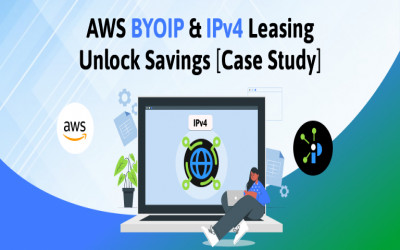What is IPv4 to IPv6 Tunneling?
-
Posted at 2021-02-26 17:27:21
.jpg)
IPv4 to IPv6 tunneling relates to the use of the current routing system of the IPv4 address to accommodate the inevitable IPv6 traffic. It helps to effectively migrate to IPv6 by maintaining consistency with the IPv4 hosts and the routers configured at present. In addition, you can boost the transfer process to IPv6 by preserving the continuity among infrastructure systems. This was because when you are using IPv6, you can also use the IPv4 networking infrastructure to optimize the resources that are available.
A variety of transition mechanisms are available for tunneling IPv6 over existing IPv4 networks:
•manually configured IPv6 over IPv4 tunneling
•IPv6 over IPv4 GRE tunneling
•semi-automatic tunneling
•fully automatic tunneling
•ISATAP tunneling
The router and host servers of IPv4 or IPv6 can do IPv6 datagram through the networking topology of IPv4 addresses by using them in the IPv4 packets usable. In particular, tunneling from IPv4 to IPv6 can be achieved as mentioned below.
•IPv4 or IPv6 Routers are linked to the IPv6 packet tunnels across devices using an IPv4 interface. This implies that now the tunnel covers every particular section of the IPv6 packet's end-to-end route.
•Host-to-Router: The IPv4 or IPv6 host tunnel to an intermediate IPv4 or IPv6 router which can be reached via the current IPv4 infrastructure, in this case. In this case, the tunnel just occupies the first portion of the IPv6 packet end-to-end route.
•Host-to‐Host: This is indeed a linking of IPv4 or IPv6 hosts to that of a tunnel IPv6 packets across the networks using IPv4 architecture. The complete end-to-end path of the IPv6 packet is shielded in this case.
•Router-to-Peer: The IPv4 or IPv6 routers tunnel to both the actual destination host, whether it is IPv6 or IPv4. This implies that the tunnel just occupies the last portion of the end-to-end route of the IPv6 packet.
Deploying IPv6 over IPv4 Tunneling
The consistency with the broadly deployed IPv4 servers and routers is the secret to a smooth IPv6 transition. The process of converting the Internet to IPv6 is simplified for IPv4 compatibility by using IPv6. An IPv6 links isolated IPv6 locations with an IPv4 network via an IPv4 tunnel. The implementation of IPv6 over IPv4 will support service providers and businesses that are involved in providing an end-to-end IPv6 service without significant infrastructure improvements. The ability to link isolated IPv6 domination over existing IPv4 infrastructure and services is one of the key advantages of this method of tunneling.
Through IPv6 tunneling across IPv4, configuration data on the enclosing node decides the IPv4 tunnel destination address. Either one-way or two-way tunnels can be used. Two-way tunnels serve as point-to-point virtual connections. Although the platforms IPv4 and IPv6 cannot explicitly interoperate, transfer schemes exist that allow hosts to connect with any other user on any network form.
The processes of transfer link IPv4 to IPv6 and enable the two options to work together. Since IPv6 is a distinct IPv4 protocol, the switch from IPv4 to IPv6 could be run concurrently with IPv4. Both IPv4 and IPv6 can be running on the same framework (dual stacking) at one time by host and network system, and they are hidden. The two protocols have no intervention. IPv4 networks would be lost on time as we switch to IPv6.
At present, unused IPv4 addresses are a major cause of electricity consumption which directly relates to greenhouse emissions. Therefore, tunneling is an essential technique to efficiently use the resources. It helps to avoid wastage of energy and resources at present and the future as well.
.jpg)

.png)
